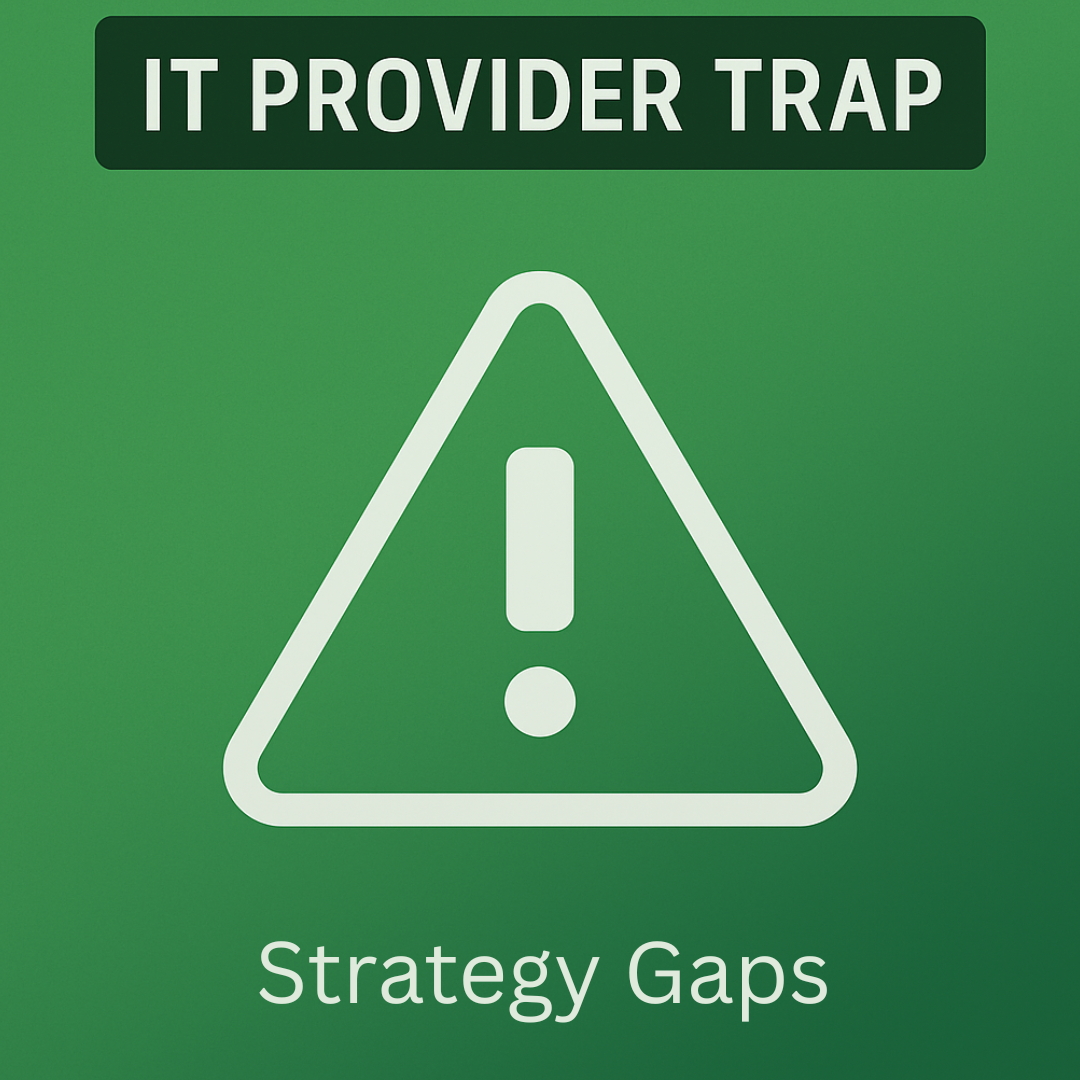Great IT isn’t just tickets and tools—it’s a plan that supports how you grow. When your provider can’t (or won’t) connect technology to business goals, you don’t just stall. You drift.
1) No plan, just firefighting
If every conversation is about today’s outage or this week’s nuisance, there’s no strategy—just reaction. Projects appear out of nowhere, priorities shift with the wind, and nothing important gets finished because everything is urgent.
2) Budget by surprise
You’re told costs are “predictable”… until you have to replace a lot of computers at once because they hit end-of-life, or a license change/renewal lands out of the blue. No annual forecast, no refresh schedule, no heads-up—just invoices. Finance can’t plan, leadership delays decisions, and the cycle repeats.
3) Silent tool swaps
You probably don’t care which tools your provider uses—that’s their job. The risk is constant, behind-the-scenes tool changes to chase the lowest price or the latest shiny thing without real due diligence.
These are provider-side tools (security stack, backup, email filtering, remote monitoring and management), so you may never see the swap. When the stack keeps changing, the team doesn’t get time to learn it or harden it. Configs are rushed, alerts aren’t tuned, and coverage breaks—so security holes get missed and backups fail quietly. The issue isn’t the brand; it’s churn without standards or stability.
4) Meetings with no follow-through
You meet. You nod. Then nothing changes. Action items evaporate, feedback isn’t asked for—or it’s asked and goes nowhere—and the same problems show up quarter after quarter. If you have to repeat the same pain points every meeting, the message is clear: they’re not listening, or they don’t care enough to adjust the plan.
5) Metrics that don’t matter
Endless dashboards and canned reports look busy—tickets closed, handle time, uptime to the fourth decimal—but they don’t tell you whether the business is running better. What matters: issues get resolved quickly and well by people you trust, interruptions go down, and projects actually land. If reports don’t reflect that, they’re noise.
6) Skills and training aren’t invested in
Tools change. Threats change. If your provider isn’t investing in ongoing training, staying current, and real-world practice, advice gets stale and mistakes creep in. You’ll hear the same answers for years, see misconfigurations repeated, and watch security decisions prioritize convenience over risk. That’s not strategy—that’s stagnation.
Quick self-check: are strategy gaps dragging you?
- Planning talks never get past today’s fires
- IT spend swings month to month with no forecast (and end-of-life refreshes catch you off guard)
- Tools change without notice, configs break, and coverage gaps appear
- The same issues resurface every quarter
- Reports are busy—but don’t reflect business outcomes
- You never hear about staff training, certifications, or security exercises
If two or more hit, you don’t have a tech problem—you have a planning problem.
Want the full checklist of red flags (and how to avoid them)? Grab the white paper:
The IT Provider Trap – How to Spot Danger Signs Before Your Business Pays the Price
Next up: Part 7 — “No One Owns the Problem.”
